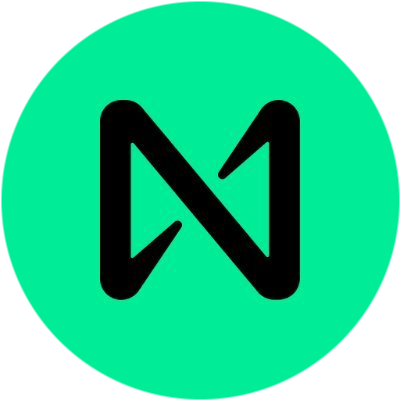
Near Ecosystem
NEAR is a Layer 1 blockchain built to be simple, secure and scalable. Read more
Market Cap
Projects
Ecosystem Backers
Projects

Tether
USDT is a fiat-collateralized stablecoin pegged to the US Dollar issued by TetherUS.

Near Protocol
NEAR Protocol is a blockchain platform designed for AI applications.

ChainLink
Chainlink is the platform that connects real-world data, governments, enterprise systems, and thousands of blockchains into unified applications.

The Graph
The Graph is a protocol for building decentralized applications quickly on Ethereum and IPFS using GraphQL.

Maker
MakerDAO is an Ethereum-based protocol that facilitates collateral-backed loans without the need for a middleman.

1
1 is a DEX aggregator and liquidity protocol on Ethereum Virtual Machine.

Trust Wallet
Trust Wallet is a self-custody crypto wallet supporting 10M+ assets across 100+ blockchains.

Ninety Eight
Coin98 is a non-custodial crypto wallet service and suite of DeFi products.

Band Protocol
Band Protocol is a data management protocol.

Aurora
Aurora is NEAR-based EVM that leverages NEAR-specific technology and brings Solidity Smart Contracts to NEAR.

SubQuery Network
SubQuery is a blockchain developer toolkit.

Stader
Stader is a multi-chain, non-custodial liquid staking protocol.

Orderly Network
Orderly Network is a permissionless liquidity layer for Web3 trading powered by LayerZero.

Siacoin
Siacoin is a fully decentralized cloud storage.

Ontology
Ontology is a public chain infrastructure and distributed trust collaboration platform.

SWEAT
SWEAT is a Health & Fitness Wallet App.

OpenOcean
OpenOcean is a cross-chain DEX aggregator on Ethereum Virtual Machine.

DIA Token
DIA is an open-source, data and oracle platform for the DeFi ecosystem.

Sender AI
Sender is a non-custodial wallet tailored for NEAR.

Flamingo
Flamingo is an interoperable, full-stack decentralized finance protocol built on the Neo blockchain

Octopus Network
Octopus Network is a multi-chain network that provides leased security and interoperability to Substrate appchains.

Covalent
Covalent is a modular data infrastructure layer.

Sky
Sky is an Ethereum-based lending protocol that allows you to borrow without intermediaries.

Dune
Dune is a tool for blockchain research.

PublicAI
PublicAI is a decentralized marketplace focused on data annotations in the field of artificial intelligence (AI).

OneKey
OneKey is a multi-chain non-custodial crypto wallet.

Rubic
Rubic is a cross-chain tech aggregator.

Figment
Figment is a blockchain infrastructure and services providers.

idOS
The identity layer of web3.

Somnium Space Cubes
Somnium Space is an open-source VR platform, which allows users to buy digital land, homes, buildings, and myriad in-game assets.
1 - 30 from 52
Show
30
What is Near Ecosystem?
NEAR Protocol is a decentralized application platform. It was created with the aim of being a community-run cloud computing platform with a focus on developer-usability and user-friendliness. The platform uses a Proof-of-Stake consensus mechanism and sharding technology in an attempt to solve blockchain problems related to scalability. Its native NEAR tokens can be used to pay for transaction fees and storage on the Near platform.
What are NEAR key features and how does it work?
As mentioned, NEAR Protocol attempts to offer a solution to blockchain scalability issues. It does this using a unique solution, that is with the implementation of its sharding mechanism called Nightshade. Sharding works by splitting the network into smaller fragments, or shards. By doing this, the computational load on a node is reduced since a particular node is only required to run the code that is relevant to its shard. As such, shards can conduct computation in parallel with one another. Consensus is achieved via a Proof-of-Stake mechanism. With PoS, nodes must stake their NEAR tokens to be considered to become a validator. Alternatively, regular users can delegate their stake to validators of their choice. NEAR uses an auction system to choose validators every “epoch” (approximately every 12 hours), and validators who have larger stakes have more influence in the consensus process.
The NEAR token’s main function is for paying transaction fees or for being used as collateral when storing data on the blockchain. Various groups of NEAR platform stakeholders are also rewarded with NEAR tokens. For example, validators receive a NEAR token reward every epoch. Additionally, developers that create smart contracts receive a percentage of the transaction fees that their contracts generate. The remaining part of the transaction fee is burned, thus, increasing the scarcity of the NEAR token and helping to retain its value.
NEAR Protocol is capable of supporting tokens that are “wrapped” from other chains in addition to NFTs. Likewise, NEAR has constructed a bridge with Ethereum, allowing users to transfer ERC-20 tokens from Ethereum to NEAR.
What can Near Protocol be used for?
Near has a number of use cases across a variety of sectors. Some prominent projects already developing on the platform include Flux, which is an open market protocol, Mintbase, a platform for NFT issuing and selling, as well as Paras, a marketplace targeting higher quality NFTs by selected artists.
Where can you buy NEAR?
Near can be bought from any of the CEXs and DEXs as listed here.